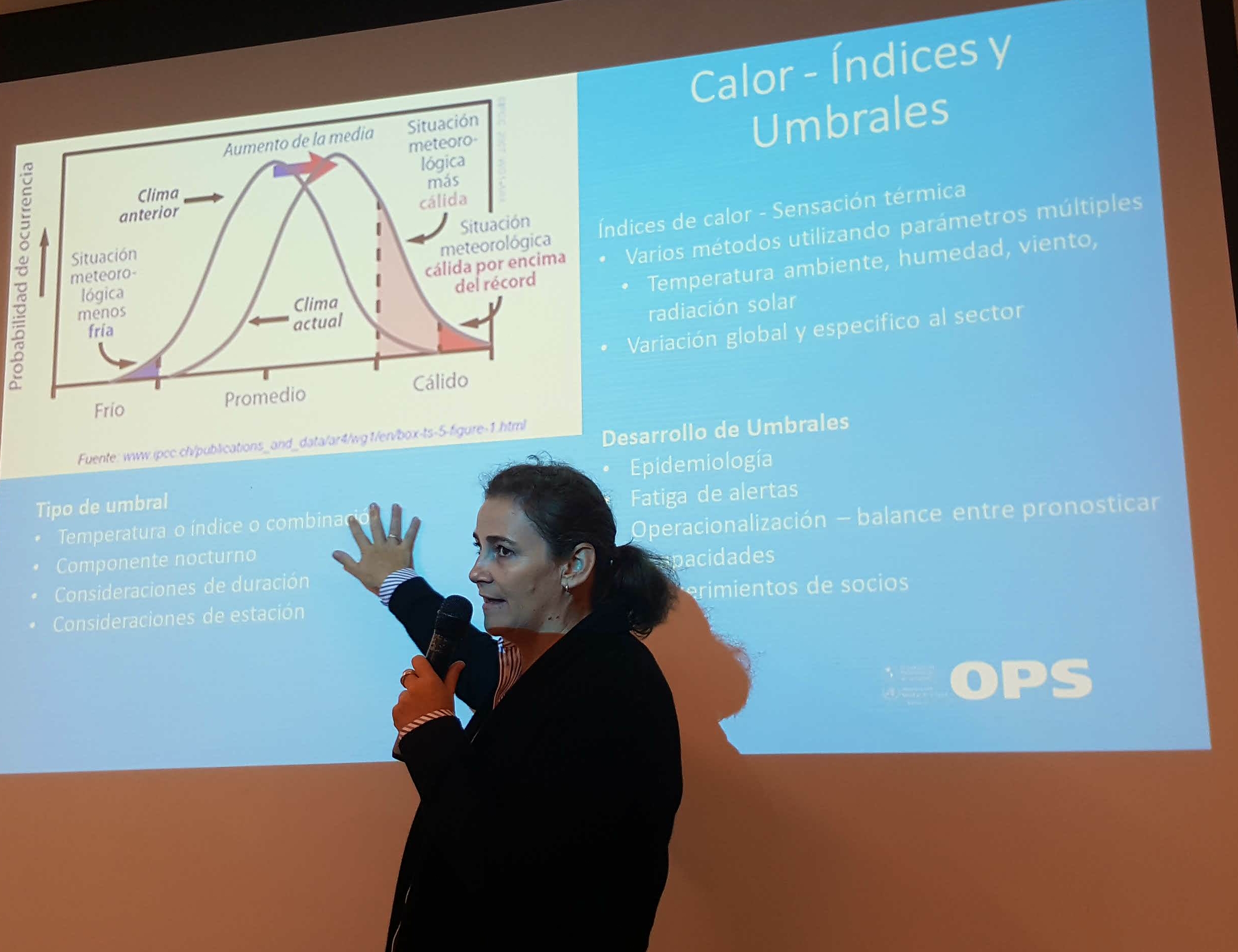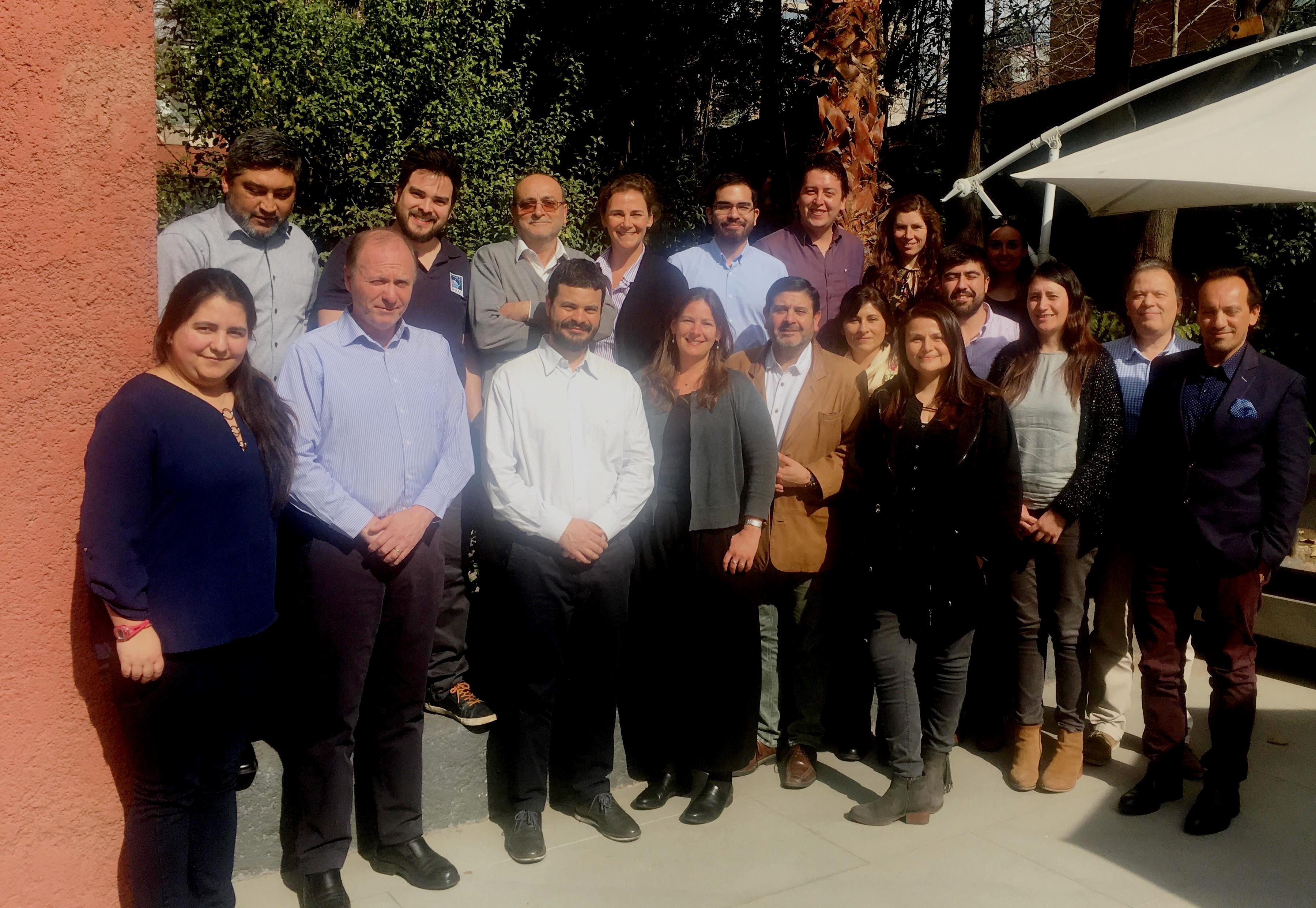Heat Health Advisory and Readiness Actions for Chile
Published: August 30, 2019
Responding to increasingly frequent heatwaves is an emerging demand on Chile’s health sector. In August 2019, global experts gathered in Santiago to review current mechanisms for predicting and responding to heatwaves, and to identify opportunities to improve forecasting, preparedness and the human impact focus for heat health in the context of the country’s climate change adaptation policy and emergency preparedness and response system.
The two day event, organized by the Pan American Health Organization (PAHO/WHO), together with the Global Heat Health Information Network and the Government of Chile, explored opportunities to improve preparedness for extreme heat, using guidance developed by PAHO, the World Health Organization (WHO) and the World Meteorological Organization (WMO).

Challenges and Responses
In Chile, heatwaves are currently forecasted based solely on maximum temperatures, and information is tailored only for forestry, with little lead time. There is an emergency protocol for responding to extreme cold, but not for heat.
Teams from Chile’s Ministry of Health and the National Meteorological Services expect to conduct new impact studies to enhance available evidence of impacts and vulnerabilities, and to develop epidemiologically informed thresholds. They will also explore ways to better capture heat stress information in the existing integrated emergency management and health surveillance system.
Meeting participants also compared experiences with heat warning and response systems operations in Argentina and the USA. Experts from the US National Oceanic and Atmospheric Administration (NOAA) and Argentina’s Ministry of Health and National Meteorological Services clarified how relevant issues, such as the use of relative humidity, have been dealt with. NOAA also shared their experiences in mapping urban heat islands, syndromic surveillance, and using decision-trees in regional pilots projects to identify decisions needed at different timescales. Argentina shared knowledge on the use of both minimum and maximum temperature to create a threshold, and the challenges of population size in determining heat events.
At the national level throughout 2019, Chile’s Ministry of Health has been running preparedness simulation exercises with hospitals and primary care facilities to enhance capacity to manage heat in complex contexts, such as in locations with existing water stress or forest fires.
The meeting increased coordination between health and meteorological services, and increased awareness of the potential for improving early warning systems and preparedness to protect health across timescales.
Next Steps
- Enhance available evidence on the health impacts of heat in Chile
- Work toward epidemiologically-derived thresholds
- Increase the lead time of heat event warnings to other government sectors
- Develop more comprehensive and specific communication strategies to raise awareness of the impacts of heat on human health

Workshop Presentations
- Olas de Calor en Chile: Evidencias y Metodologia
- Ola de calor y medidas a tomar revision preliminar
- Reunion Piloto de alcance alerta sobre salud térmica y acciones de preparación para Chile
- Predicción, Preparación y Respuesta a las Olas de Calor en Argentina
- U.S. Heat Health Planning, Preparedness, Response: The National Integrated Heat Health Information System
- Perspectivas globales: Red global de información sobre calor y salud
- Medidas a tomar frente a las olas de calor
- Heat Health Action Plans & Warning Systems

